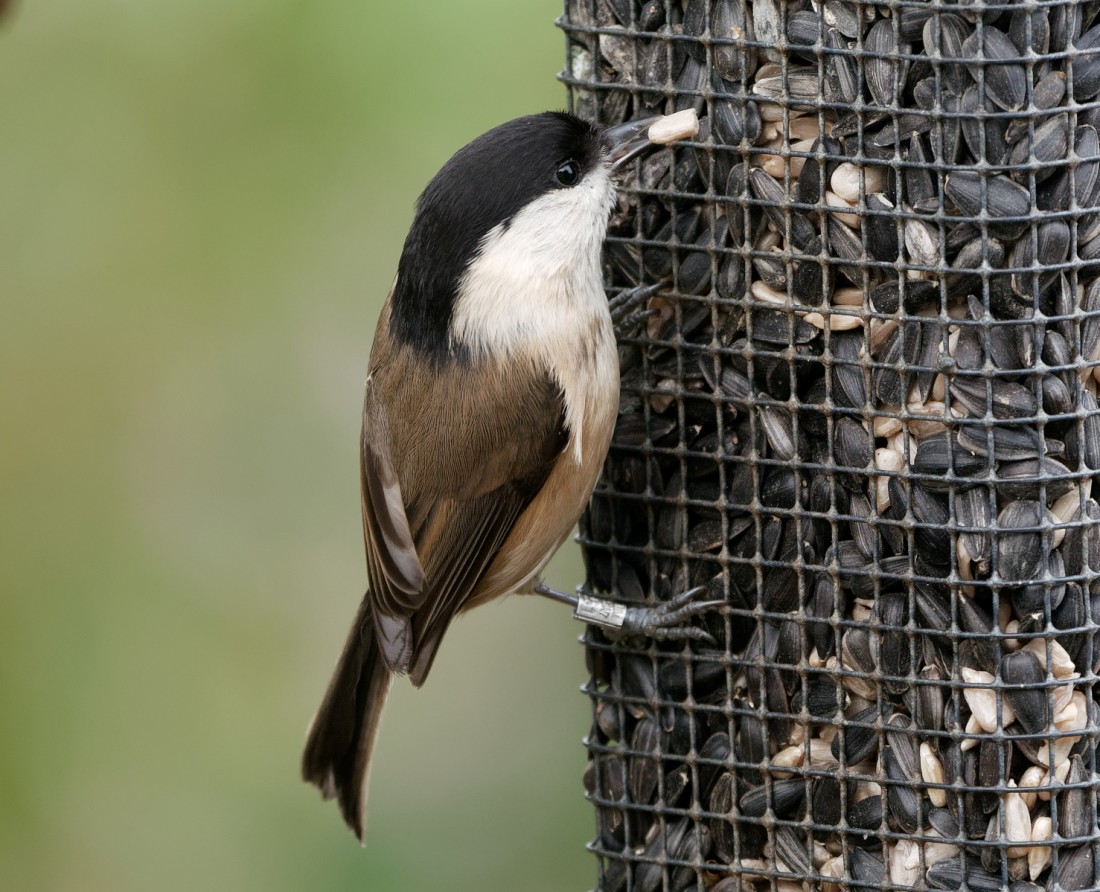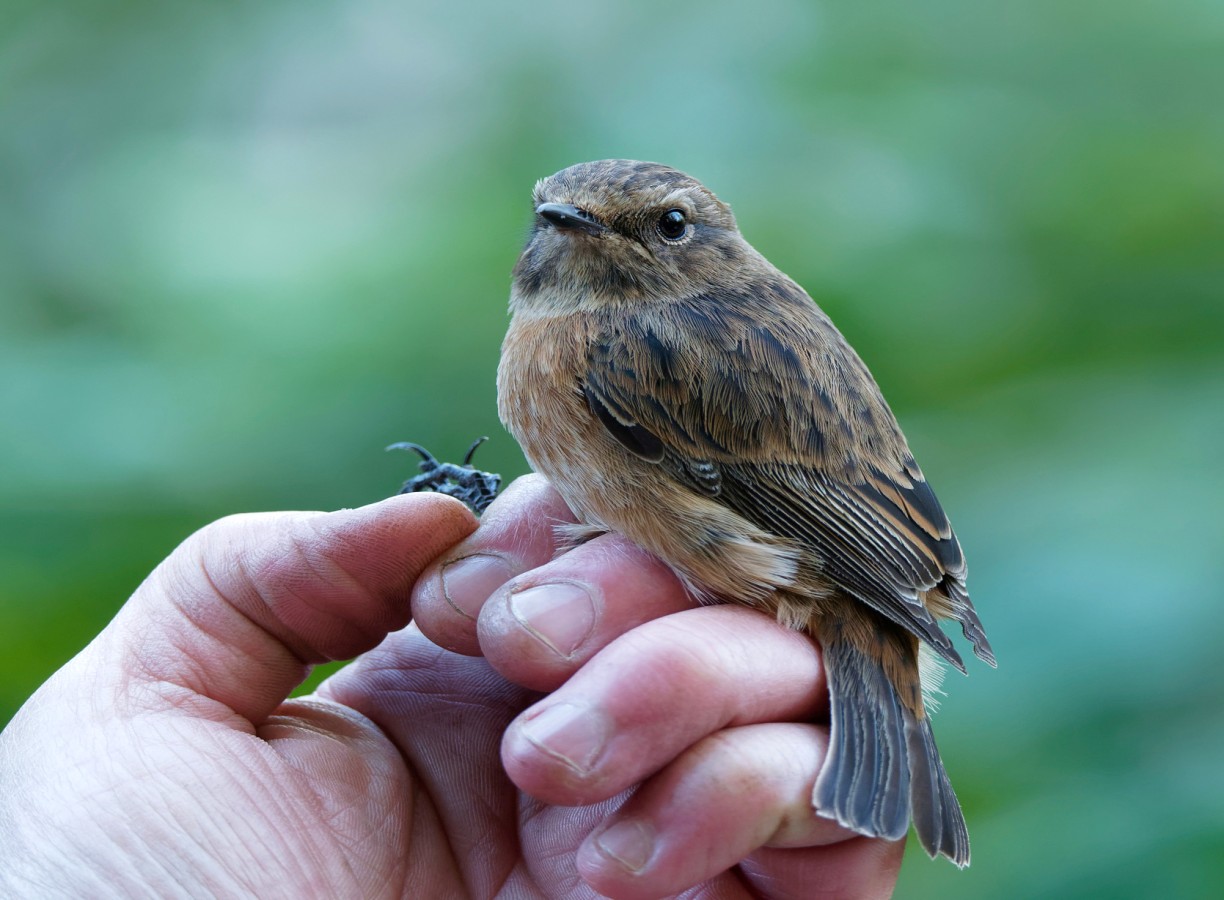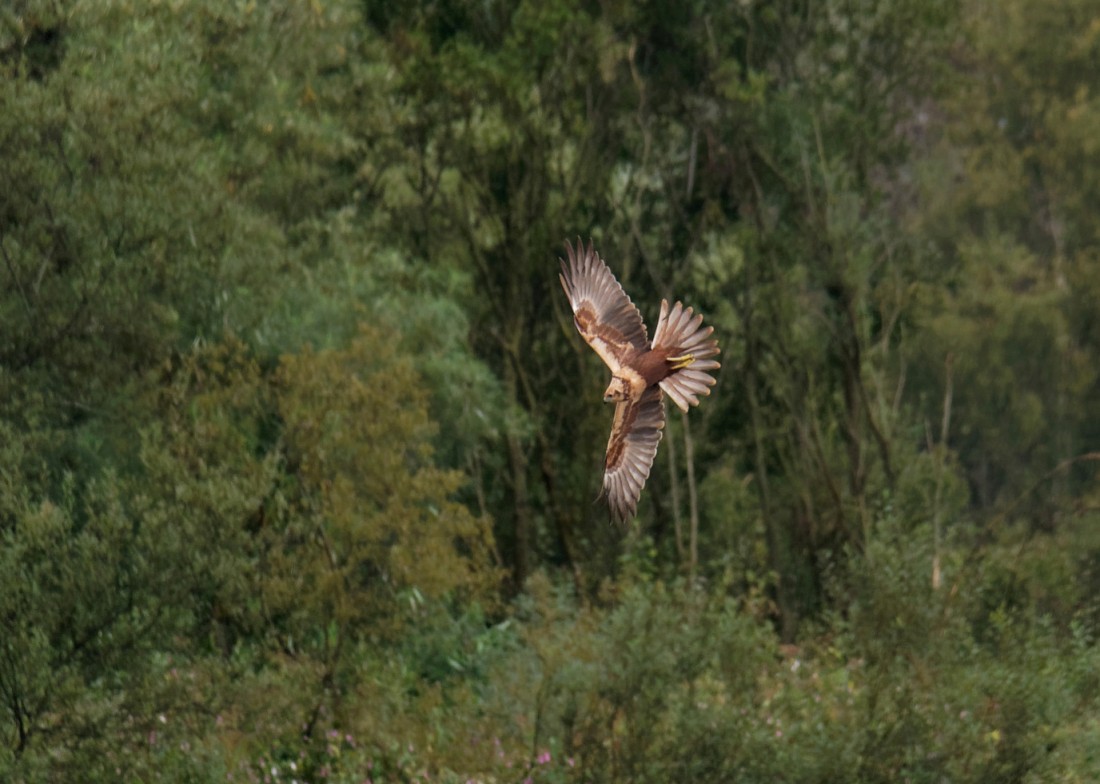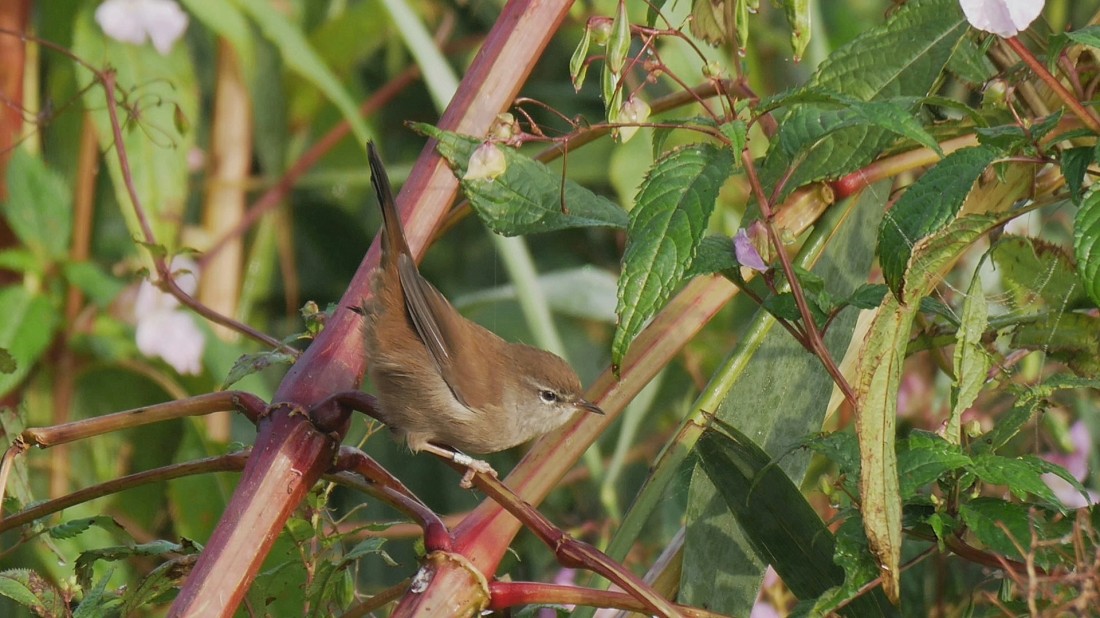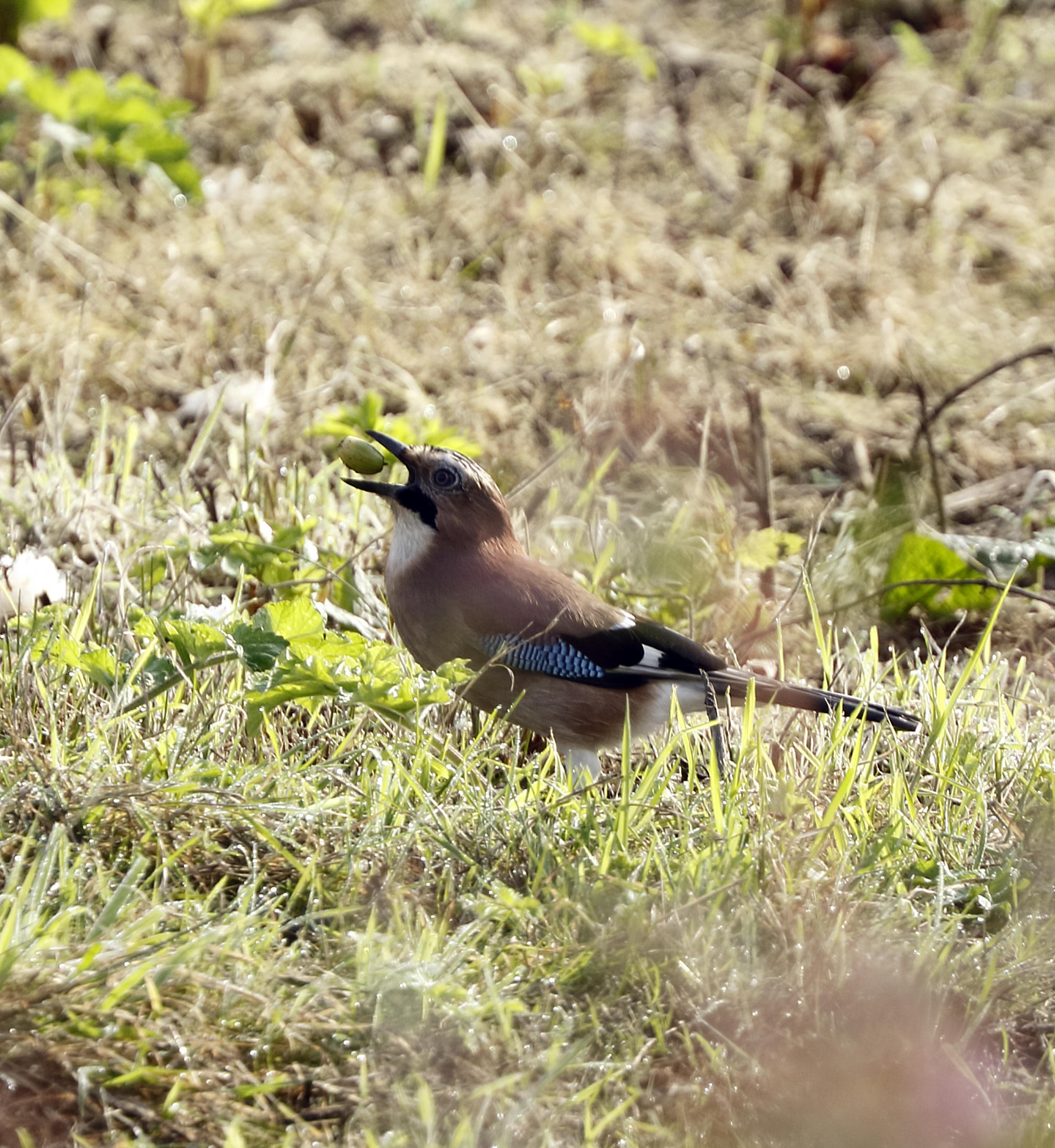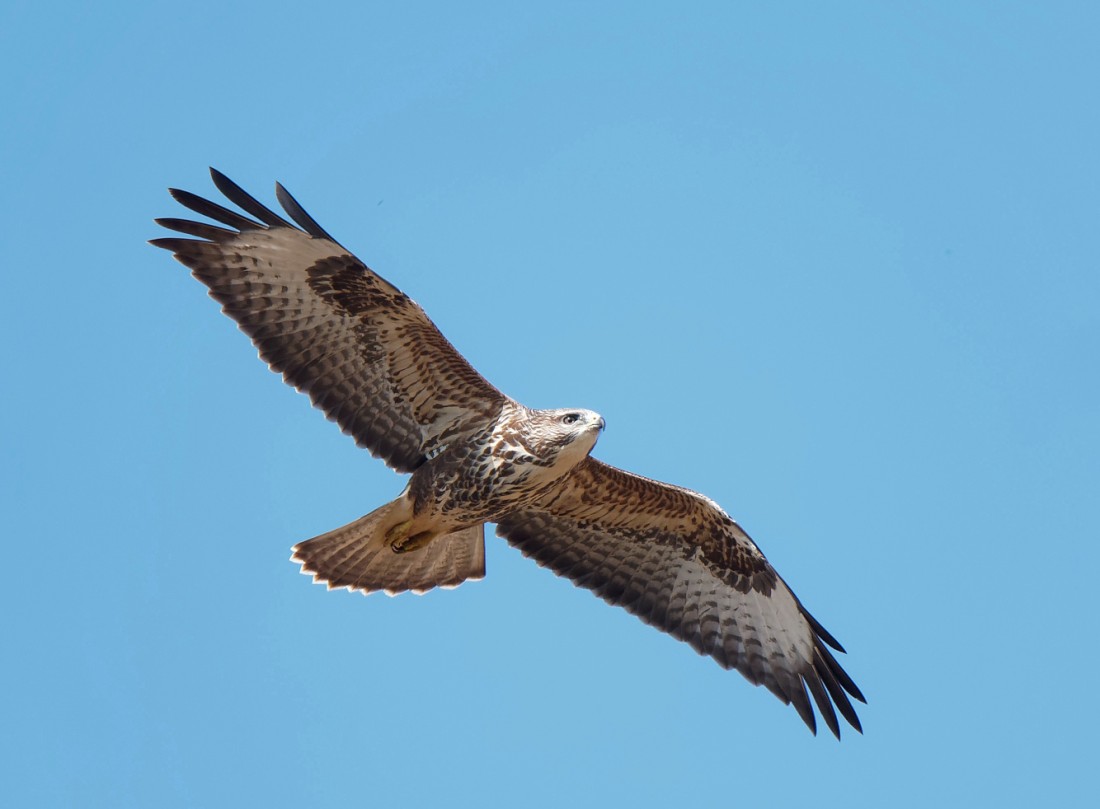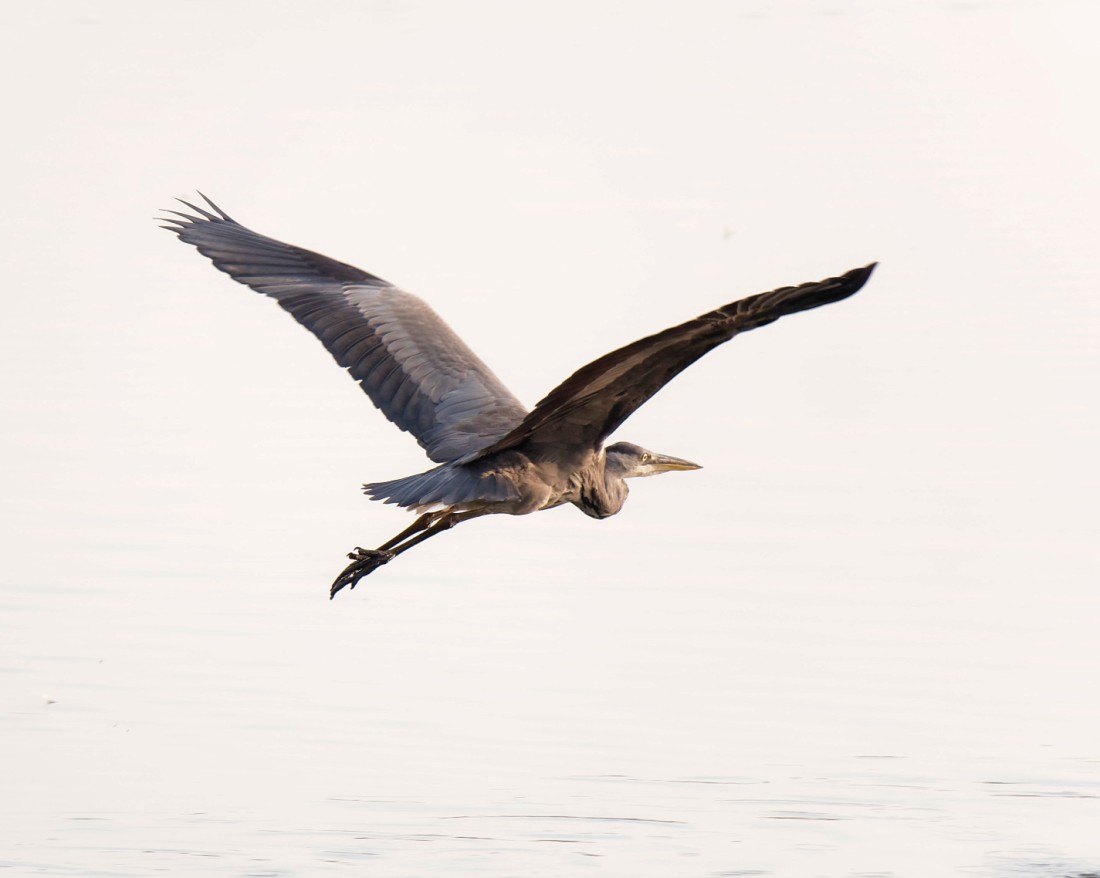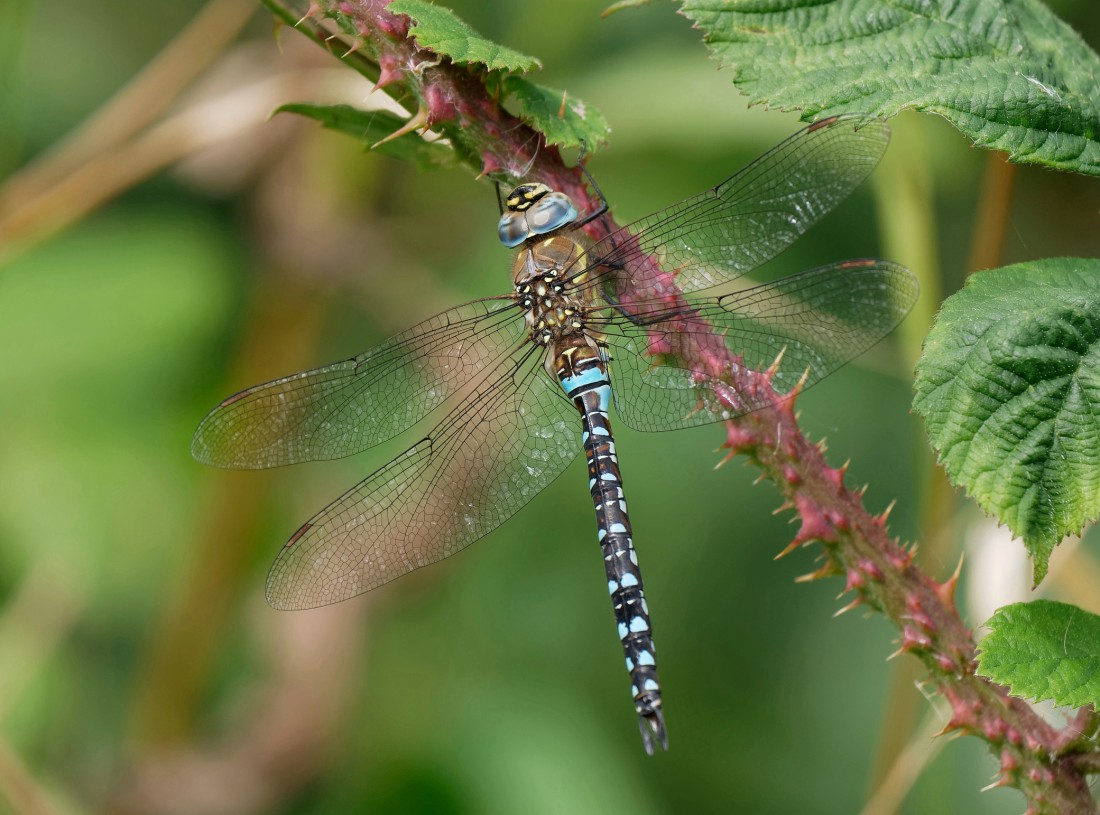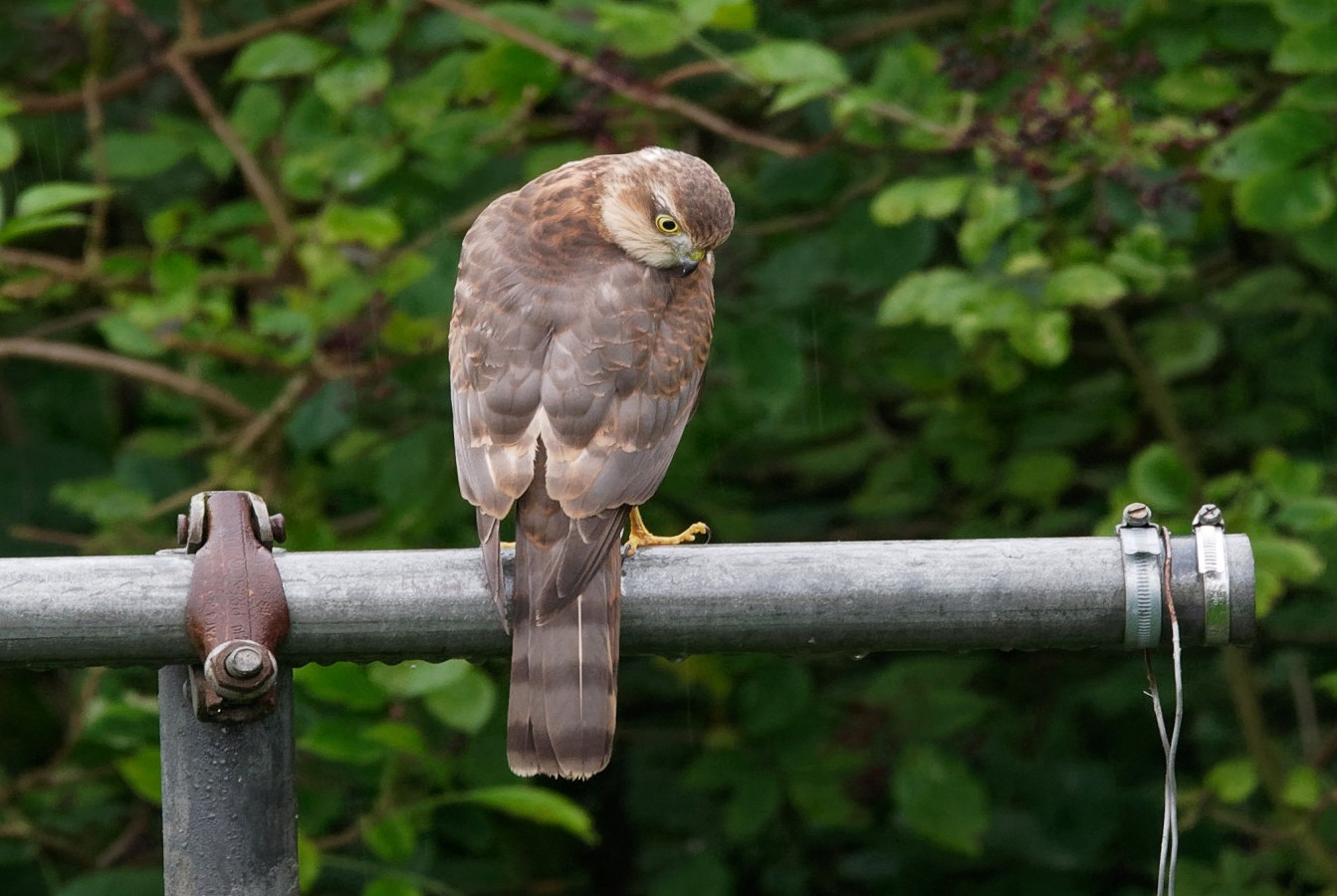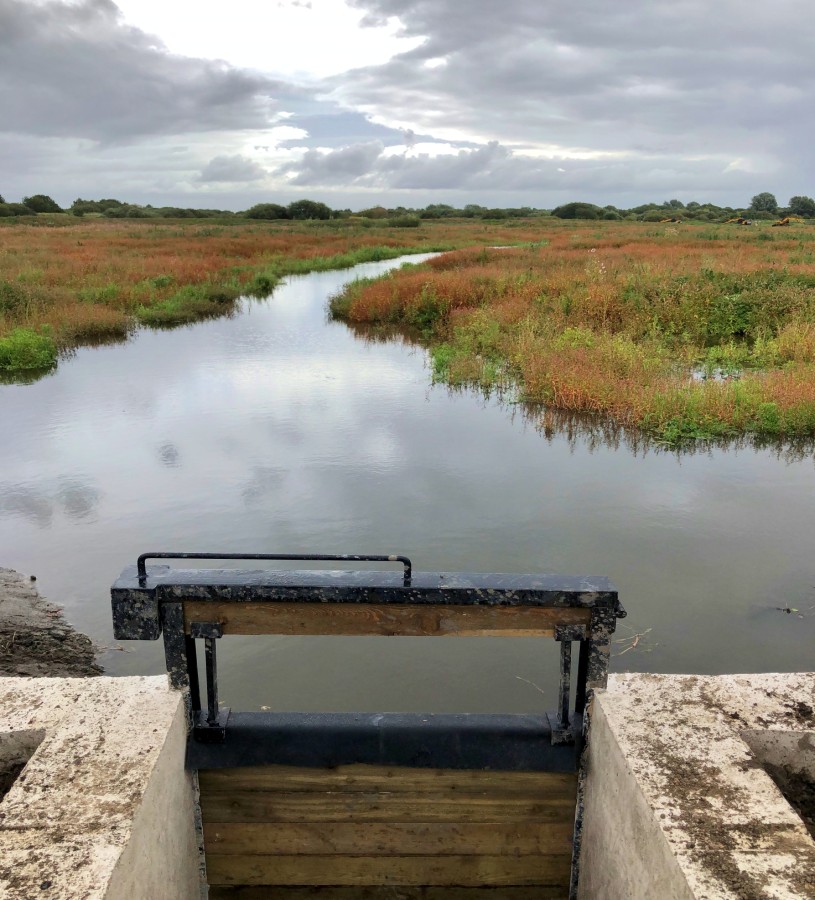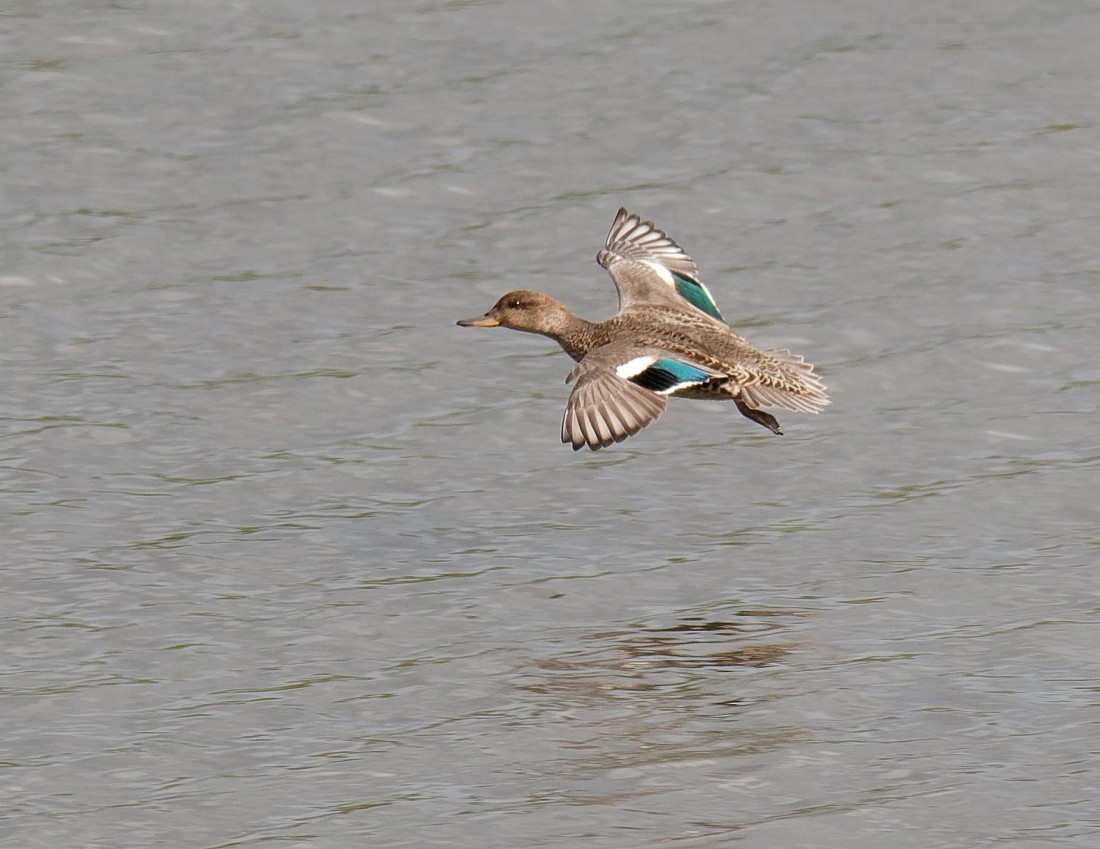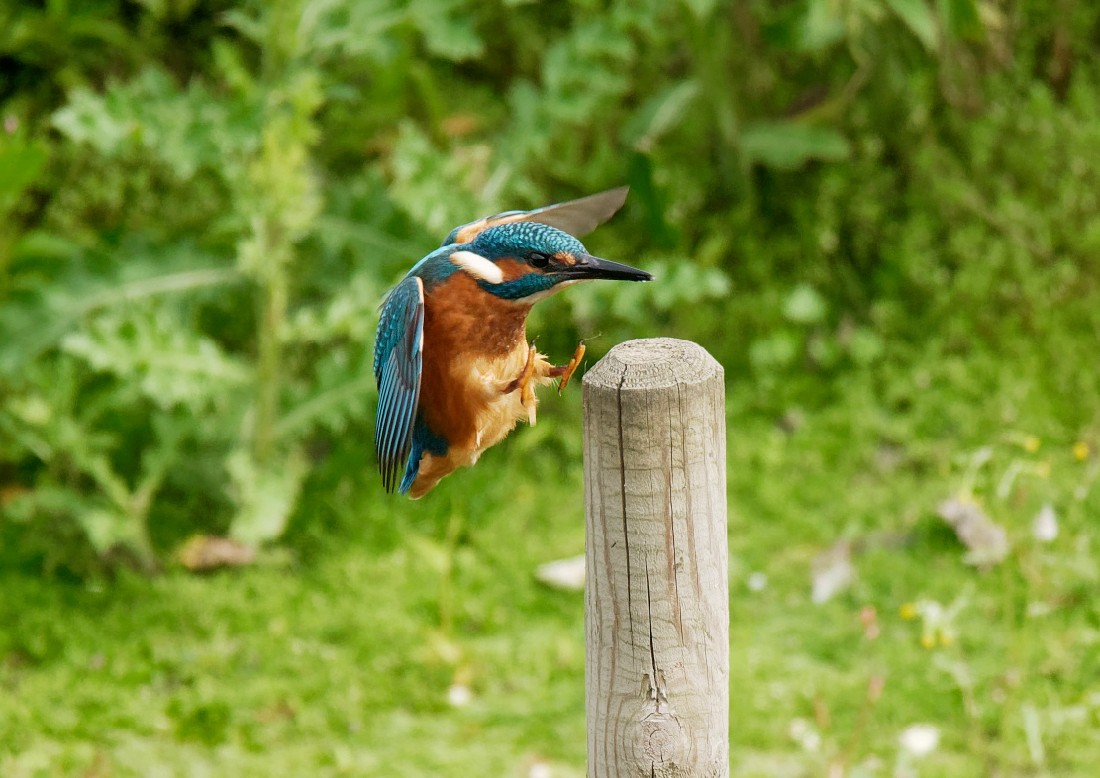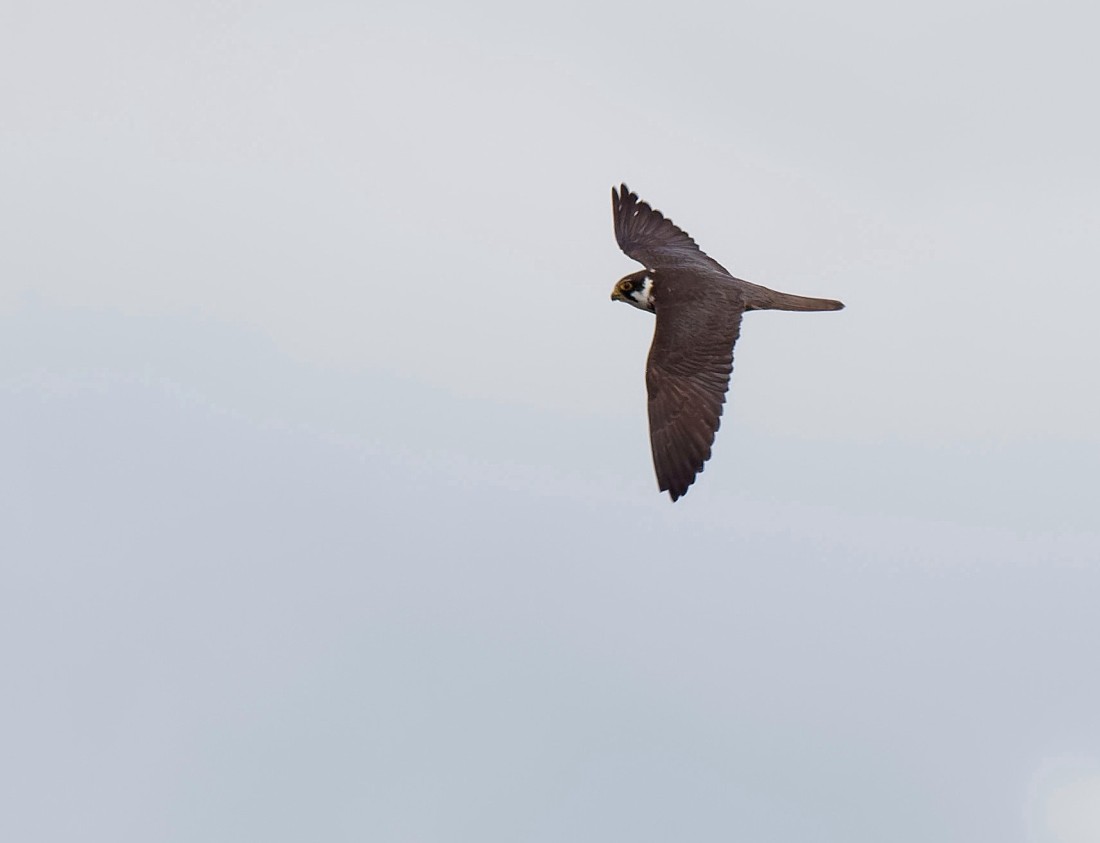Woolston Eyes Monthly Sightings
2020-09-29
A superb morning on No.3 bed starting in dense fog and ended in brilliant sunshine. With such limited visibility I decided to spend some time watching the feeding station in front of the Sybil Hogg Hide, as the feeders are really close, as is the muddy bay in front of the hide. It started well, with two adult Water Rails having a territorial squabble, Cetti’s Warblers showing regularly and a small flock of seven Song Thrushes dropping in. Then 3 Willow Tits came in to the feeders, while a couple of late Reed Warblers were out in the reeds and a few Chiffchaffs filtered past the hide, calling constantly. Overhead I could hear Lesser Redpolls passing by at low level and, interestingly, Mike Miles ,who was ringing on the bed, caught 15 in one net. Two Jays were constantly burying acorns in front of the hide, while a cheeky Grey Squirrel kept nipping out to dig them up as soon as the Jays had gone. Autumn, truly arrived when 18 Redwings dropped in, followed closely by the well-marked female Marsh Harrier, which has been around for the past week. Photo of a Willow Tit Cheers David Bowman
Submitted by: David Bowman
2020-09-26
Well, that really felt like an autumn day, waking to a light frost and with a cold north-westerly freshening throughout the morning. Before first light a Dunlin was circling No.3 bed and then the ringers delivered the bird of the day, a juvenile female Stonechat caught and ringed. This may well have been the same bird reported earlier in the week and not surprisingly, given how uncommon Stonechats are on the bed, was the first to be ringed there. Otherwise, sightings of interest included a Green Sandpiper, a couple of passing Ravens, a noticeable influx of Blackbirds, a dozen Lesser Redpolls passing over plus two more Cetti’s Warblers ringed, making 23 so far this year. Photo of the Stonechat Cheers David Bowman (with Helen Wynn, David Spencer, Brian Baird, Brian Martin, Kieran Foster et al)
Submitted by: David Bowman
2020-09-23
With overnight rain and a continuing drizzle at dawn, there was always the chance of something interesting turning up on No.3 bed. It started well, with Green Sandpiper, Water Rail, Snipe and Kingfisher in front of the Morgan Hide and a marauding male Sparrowhawk making several attempts to snatch a Greenfinch off the feeders. Once again one of the Kingfishers was showing some interesting behaviour by landing on the islands in front of the hide and picking up clumps of earth, tossing them around and pecking furiously at them. Hoping to find a juicy beetle to eat, I guess, as I have seen them take large spiders in the past. Finally, when the rain cleared and the sun broke through the bird of the day dropped in - a female Marsh Harrier, one of the most beautifully marked females I’ve seen. It stayed for an hour or so before catching a thermal, rising to a great height and drifting away on its southbound journey. Record shot of the Marsh Harrier Cheers David Bowman (with David Spencer)
Submitted by: David Bowman
2020-09-22
WeBS Count for 19/09/2020
Little Grebe 15, Great Crested Grebe 5,Little Egret 1, Cormorant 27, Mute Swan 16, Grey Heron 4, Canada Goose 12, Wigeon 9, Gadwall 100, Teal 162,Mallard 146, Shoveler 81, Tufted Duck 18, Water Rail 2,Moorhen 20, Coot 37 Kingfisher 1,Lapwing 60, Snipe 7, Black-tailed Godwit 1,Green Sandpiper 1,Black-headed Gull 61 Great Black Back Gull 4. Lesser Black-backed Gull 1.
Submitted by: Brian Martin
2020-09-22
A relaxed morning started with a Marsh Harrier gliding through the early morning mist on No.3 bed. Though there was no sign of yesterday’s Stonechat, there was plenty to see from the Morgan Hide, with a juvenile Water Rail, Kingfisher, two Wigeon , three Snipe, three Grey Wagtails and, best of all, a Cetti’s Warbler sunning itself, all in front of the hide. Record shot of the Cetti’s Warbler Cheers David Bowman
Submitted by: David Bowman
2020-09-17
Not much time for birding this morning. Instead, a meeting on No.4 bed, with colleagues from the Forestry Commission and the RSPB, starting the process of applying for a Stewardship grant for the management of the woodland aspects of the new wetland site. This includes large areas of flooded woodland outside the wetland areas. This kind of woodland is becoming increasingly scarce, nationally, and is exceptionally productive for birds and other wildlife. We made good progress and remain hopeful of being successful with the bid. Wildlife over the morning included 2 Green Sandpipers, 13 Snipe. 3 Migrant Hawkers and 40 Common Darters. Photo of a Common Buzzard Cheers David
Submitted by: David Bowman
2020-09-16
This link is to a video showing a Hobby hawking for dragonflies, Green Sandpipers, Carrion Crow and Magpie feeding on Elderberries, female Garganey, Kingfisher with fish, Black-tailed Godwit, Northern Wheatear, Moorhen, Lesser Black-backed Gull attacking a Moorhen, Cormorant, Grey Heron, Teal, Lapwing, Wigeon, Wren dust-bathing, Pink-footed Geese close overhead and a Sparrowhawk.
To watch David’s video click here….. or cut and paste this link into your browser https://youtu.be/vTh1xdJHFTE Cheers David
Submitted by: David Bowman
2020-09-15
A dawn start on No.3 bed, with the prospect of warm sunshine and high humidity. On still days like this there tends not to be much movement and, after the flood of hirundines and pipits on Saturday, I couldn’t find one today. Three Green Sandpipers, all un-ringed, were on the Morgan Hide scrape early on and then odd Wigeon started to arrive, totalling nine by the end of the morning. A single female Pintail was also nice to see, while an over-flying Raven moved eastwards and five Snipe dropped in. As ever, Kingfisher, Water Rails, Cetti’s Warblers were noted, while plenty of Blackcaps and Chiffchaffs were feeding around the bed. Photo of a Grey Heron Cheers David
Submitted by: David Bowman
2020-09-15
A 6.30 am start on Saturday at the eastern end of the Reserve for the first Visible Migration Watch of the season. Blue skies and a light but cool WSW wind promised much but delivered even more. An early Great White Egret moving west along the river was a first for one of these counts and hirundines and pipits soon started to move over. By the end of the morning 460 Swallows, 100 House Martins and 300 Meadow Pipits had been totalled. 10 Ravens then moved east, a Reserve record count, including 4 chasing a Sparrowhawk. The volume of hirundines inevitably pulled in a late Hobby, while two Peregrines were hunting over the bed. A mid-morning leg-stretch produced 2 Green Sandpipers and 2 Snipe by the pools and the 25 Pink-footed Geese flew just a few feet over our heads. Final counts of note were: 1 Swift, 51 Stock Doves, 64 Linnets and 36 Cormorants. Photo of a Migrant Hawker Cheers David (with Dave Steel, Helen Wynn and Brian Baird)
Submitted by: David Bowman
2020-09-10
An early start, with two Green Sandpipers (both un-ringed) in front of the Morgan Hide, along with a juvenile Water Rail and a couple of calling Cetti’s Warblers, before walking over to check out the new No.4 bed wetland. This produced a nice male Wheatear, en route to Africa for the winter from its more northerly breeding grounds. Wildfowl are now starting to move into the seed-rich, shallow flooded areas of the and we flushed 50 Mallards and a few Teal and Gadwall as we walked. My guess is that an awful lot more were feeding out in the more inaccessible areas. Back in No.3 bed a third Green Sandpiper, two Snipe,a single Black-tailed Godwit and a passage of 55 Swallows and 15 House Martins were the pick of the bunch. Photo of the Wheatear Cheers David
Submitted by: David Bowman
2020-09-07
A productive morning on No.3 bed, meeting with contractors ELM to sort out the clearance of vegetation from the Morgan Hide scrape and the area in front of the hide. Some birding beforehand delivered a nice surprise when a Jack Snipe dropped in with two Common Snipe - an early return date for this cryptic and elusive migrant, which breeds in Scandinavia and north-east Europe. We’re usually lucky to see the odd one on the Reserve most years, though the developing habitat on No.4 bed should result in an increase in the numbers stopping over on passage and wintering. Otherwise, the odd Green Sandpiper, Black-tailed Godwit and Kingfisher, along with a smart juvenile male Sparrowhawk, which has taken to sitting on top of the bird feeders, were the main sightings. Photo of the Sparrowhawk. Cheers David
Submitted by: David Bowman
2020-09-05
While the rest of our group stayed in the Morgan Hide, scanning for migrants I walked over to No.4 bed to check on progress with the construction of the first of the five proposed sluices for the new wetland. The sluice is now almost finished and water levels on the northern half of Cell 2 (Cell 1 will be constructed in 2021) are starting to rise. Birds are quick to move in to new wetlands, due to the rich feeding, and that was evident this morning., with nearly 90 wildfowl flushed from near the sluice. Two Swifts and 30 House Martins were hawking over the same area and attracted the attention of one of the local Hobbies. Two Green Sandpipers and 4 Snipe were then feeding around some shallow pools on the southern area, which is currently being worked on. Back on No.3 bed, the usual fare of Kingfisher, Black-tailed Godwit and Water Rail were supplemented by a passage of 50 more House Martins and a couple of Grey Wagtails. Photo of the new sluice Cheers David (with Helen Wynn, David Spencer, Brian Martin, Alan Warford, Les Jones, Brian Baird and Colin Hamlet)
Submitted by: David Bowman
2020-09-03
A pleasant morning on No.3 bed, though with less visible passage than the previous few days. The two un-ringed Green Sandpipers on the Morgan Hide scrape were probably the same ones from the past few days. The 50 or so hirundines which passed over were split evenly between Swallows and House Martins, with just a couple of Sand Martins, though I couldn’t find a Swift today, nor any passage raptors. Wildfowl numbers were good, with 155 Shovelers and 85 Teal in front of the Hide, along with a less welcome 150 feral geese (roughly 100 Greylags and 45 Canadas). The main feature of the day was the volume of Blackcaps around the bed, feeding on the profusion of Elderberries, along with smaller numbers of Chiffchaffs and Reed Warblers. September is peak passage time for Blackcaps on the Reserve and with 450 ringed already, despite the lengthy break in ringing due to Covid-19, we could be heading for another good year.
Photo of a Teal
Cheers David
Submitted by: David Bowman
2020-09-02
This morning at Woolston Eyes was split between No.3 bed and a walk onto No.4 bed, with hazy sunshine slowly becoming overcast before heavy rain. The usual autumn Green Sandpipers were present on No.3 bed, with three moving around, along with a few Snipe and Lapwings. A Hobby also put in an early appearance in front of the Morgan Hide though, with few flying dragonflies to hunt in the cool conditions, it didn’t stay around for long. One of the local Kingfishers offered the chance for some photography , on and off all morning and several Cetti’s Warblers were calling around the bed. Finally, a long spell of scanning for migrants eventually produced the goods, with two Marsh Harriers moving south, along with a single Swift and a few Swallows and House Martins before the rain moved in. Photo of a Kingfisher Cheers David
Submitted by: David Bowman
2020-09-02
With warm sunshine and a light southerly breeze on Tuesday, it looked good for some visible migration and started well with a Marsh Harrier dropping in to the eastern reed bed and the female Garganey on the South Pool. A Hobby then appeared in front of the Morgan Hide, catching and eating dragonflies on the wing. A second Hobby later appeared, hawking over the North Meadow before both birds headed off together towards No.2 bed. Two Green Sandpipers were the only waders of note, regularly flying across the bed and, as ever, a Kingfisher repeatedly posed for photographs in front of the hide. Best, as is so often the case, was saved for last. Diligent scanning for a late Swift had been unproductive, when I picked up a flock of 50 Swallows coming in high from the north-west. Even higher above them and drifting south-west was an Osprey, the first we’ve recorded this year, so a pleasing end to the afternoon. Photo of one of the Hobbies Cheers David
Submitted by: David Bowman

